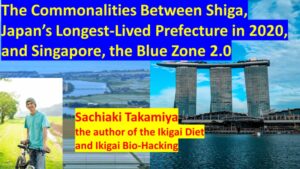Live to 120: Secrets of the Modern-Day Japanese Blue Zones: Where are the Japanese Blue Zones?
Get the Japanese Superfood List
Over the weekend, we celebrated Himachi, a neighborhood festival. Like many traditional festivals, it began with a Shinto ritual at our local shrine, followed by a delightful dinner party. Traditionally, one member from each household, usually the father, was expected to participate. However, in recent times, only about half of the households join in.
The centerpiece of our meal was a Hare dish, consisting of Ichiju Nanasai to Hassai – one soup and seven or eight dishes. While the typical Washoku format is Ichiju Sansai, meaning one soup and three dishes, during special Hare occasions, we add more side dishes to the meal.
In the past, these parties used to last all night, continuing until sunrise. The name Himachi itself means “waiting for the next day,” signifying the commitment to carry the festivities into the next morning. Nowadays, these gatherings are more concise, typically concluding around 9 pm.
This glimpse into rural Japanese life is quite distinct from city living. Neighborhood associations host numerous events throughout the year, fostering a sense of community similar to the Moai tradition in Okinawa, as described in Dan Buettner’s new Netflix documentary, “Live to 100: Secrets of the Blue Zones.” While the styles may differ, the strong sense of community ties is prevalent across Japan.
Have you had a chance to catch this exciting new Netflix series? It offers fascinating insights. If you have access to Netflix, I highly recommend giving it a watch.
Inspired by this exploration of longevity and community, I’ve started a series titled “Live to 120: Secrets of the Modern-Day Japanese Blue Zones.” This venture was prompted by my recent junior high school reunion in Nagano, where the reality of turning 61 hit home. Our discussions revolved around our age and the realization that some of us may not be present at our next reunion, slated for when we turn 70.
This heartfelt conversation unfolded among 61-year-olds from Shiga and Nagano, two of Japan’s longest-lived prefectures. It’s important to understand that blue zones are not magical lands where you automatically live longer. Regardless of your location, it’s your lifestyle choices that ultimately determine your longevity. With this in mind, I felt compelled to offer a fresh perspective on blue zones – one that faces reality and explores the true secrets to our health and longevity.
Here’s the first installment in the series, where you can see me donning a traditional Kanreki costume at our reunion:

